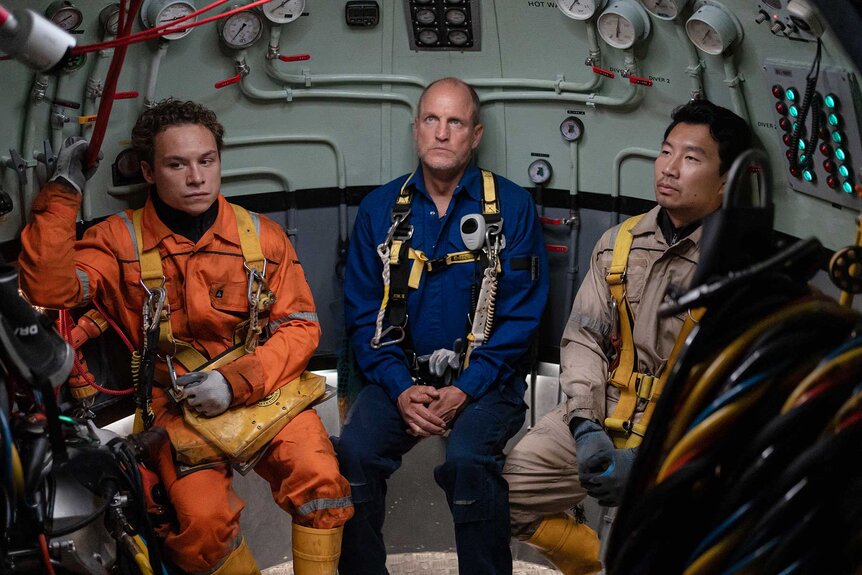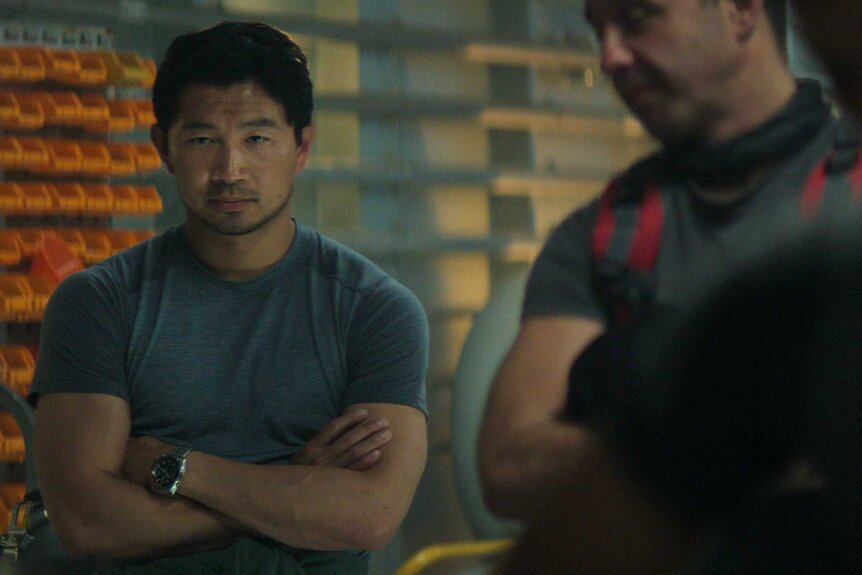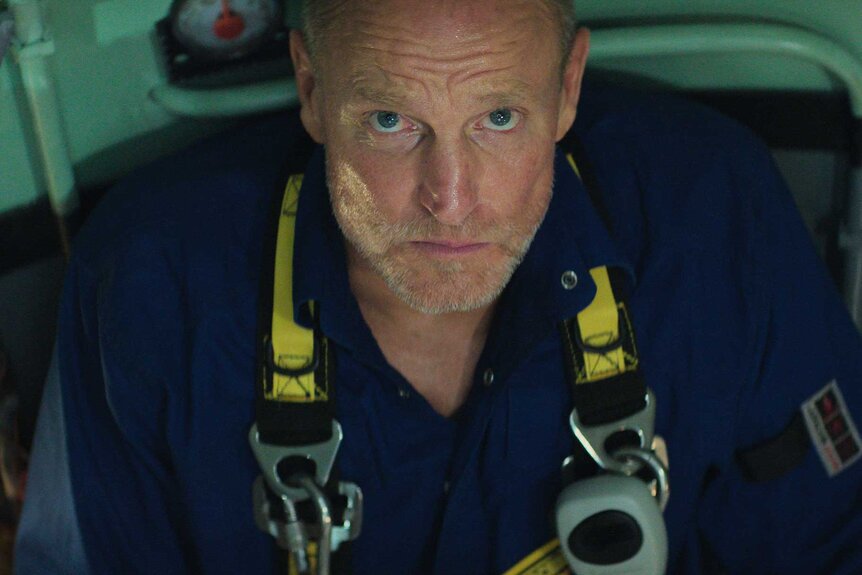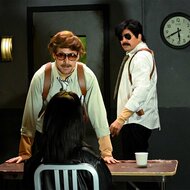The True Story of Last Breath: What Really Happened in the 2012 Underwater Rescue?
Focus Features' Last Breath is inspired by a death defying real-life underwater rescue that took place in 2012.
The film Last Breath is based on a true story, so potential spoilers ahead if you are unfamiliar with the events of the real-life 2012 rescue!
On February 28, moviegoers everywhere will embark on a death defying undersea rescue mission in Last Breath, from director Alex Parkinson.
The story centers on a trio of saturation divers working to repair an oil rig 300 feet beneath the surface of the North Sea. It’s an ordinary job (as ordinary as living and working underwater can be) until everything goes sideways, and one of the divers is left stranded on the seafloor, his umbilical lifeline severed.
Is Last Breath based on a true story?
Yes, Last Breath is inspired by a real diving accident which occurred in the North Sea on September 19, 2012. The true story is also the basis for the 2019 documentary of the same name, which was co-directed by Parkinson (along with Richard da Costa).
RELATED: Last Breath: Everything to Know About Deep-Sea Thriller Starring Woody Harrelson & Simu Liu
Last Breath has everything a blockbuster survival movie needs: an unfamiliar environment, a race against time, and a group of people who risk everything to rescue their friend. And while the screenplay was written by Parkinson, Mitchell LaFortune, and David Brooks, the story was crafted by reality itself.
How Saturation Diving works, as depicted in Last Breath
Woody Harrelson, Simu Liu, and Finn Cole will star as real-world divers Duncan Allcock, Dave Yuasa, and Chris Lemons, three men who lived through one of the most harrowing dive disasters in recent memory. On September 19, 2012, the dive support vessel Topaz was operating in the North Sea with 127 crew members aboard, including 12 saturation divers.
When SCUBA diving, divers have to be aware of the dissolved gasses accumulating in their tissues, courtesy of all that extra pressure. Every time a diver goes down, they have to come back up carefully to prevent decompression sickness, commonly known as the bends. If you’ve got a big job requiring multiple dives, decompression can throw a significant wrench in the works. That’s the problem that saturation diving seeks to solve.
Saturation divers avoid decompression by remaining inside a pressurized environment for extended periods. Inside the Topaz, you’ll find an elaborate system of tubes and compartments, a sealed and pressurized environment which saturation divers remain inside for weeks at a time. You can think of it like a space station on the water. Once inside, the system is pressurized to 10 times ordinary atmospheric pressure, roughly equivalent to the pressure they’ll experience on the seafloor. From then on, divers can move freely between the ship and the seafloor by way of a diving bell without needing to decompress every time. They just can’t leave their pressurized environment.
A computer failure left Chris Lemons stranded on the seafloor
On the day of the accident, Allcock, Yuasa, and Lemons were working on an oil rig manifold. It’s a structure filled with wells which move oil from the seafloor to an oil platform for collection. The job was to remove a piece of pipe and replace it. All three of them climbed into the diving bell and descended to a depth of about 300 feet. From there, Yuasa and Lemons entered the water while Allcock remained inside the bell to supervise.
Once in the water, divers are dependent on a complex umbilical stretching from their suit to the bell and the ship. That collection of cables delivers heat, breathable gas (a mixture of oxygen and helium known as heliox), light, and communication. In the meantime, the support vessel remains stationary at the surface, maneuvered by a computer controlled dynamic positioning (DP) system. The system pays constant attention to the movements of the ocean and fires a series of thrusters to keep the ship in place. At least, that’s how it’s supposed to work.
RELATED: Simu Liu's "That's My Jam" Performance Is So Good It Landed Him a Record Deal
On the evening of September 18, the weather over the North Sea was rough, featuring 18-foot swells and winds of 40 miles per hour when the DP system failed, and the ship lost its position. Alarms began blaring and the dive supervisor, Craig Frederickson, ordered the divers off the structure and back to the bell.
Together, Yausa and Lemons made their way up and over the structure, climbing hand over hand along their umbilicals, back to the bell. Along the way, Lemons’ tether got caught on an outcropping and he got stuck. Lemons called for slack, but with the ship rapidly pulling away, his umbilical was pulled tight. Lemons was essentially acting as an anchor, caught between the ship and the structure. Then the tether snapped, and Lemons fell back to the seafloor.
In the event of an emergency, saturation divers are outfitted with two bailout bottles, meant to give them enough gas to get back to the bell. At those depths, bailout bottles run out in about 5 minutes. The clock was ticking.
How the crew of the Topaz rescued Chris Lemons from the bottom of the North Sea
With the anchor severed, the ship was free to move, and Yuasa was pulled away along with the bell. Pulling himself along his umbilical, Yuasa made his way back to the platform just beneath the diving bell where he waited and took stock of the situation. Any rescue attempt needed to happen fast, because Lemons only had a few minutes of breathable gas remaining.
On the bridge, the crew was frantically troubleshooting the DP system while attempting to manually get the ship back into position, fighting wind and waves the whole way. At the same time, they sent the ship’s ROV (remotely operated vehicle) to hunt for Lemons on the seafloor. They found him atop the manifold structure, lying on his side. Despite having been without breathable gas for more than 10 minutes, Lemons was apparently alive, weakly motioning toward the ROV. Sadly, no one could do anything to help him until the ship was back in position, and by the time 25 minutes had passed since the accident, all movement had stopped. The crew were convinced they were now recovering a body.
RELATED: Who Guest Stars in Peacock's Laid? Simu Liu, Chloe Fineman, Brandon Perea & More
With no other options, they performed a hard reset of the ship’s computers, and when the systems came back online, everything was working properly. Back under computer control, they moved back to the manifold structure. Nearly 28 minutes had elapsed.
Yuasa remained on the platform below the diving bell, ready to move as soon as they were back into position. Soon, he saw the structure and the ROV, lighting the way to Lemons. The ship stopped over the top of his position and Yuasa dragged Lemons back to the bell. By then, more than 36 minutes had passed, over half an hour without any gas supply.
Inside the bell, Allcock removed Lemons’ helmet and gave him two deep rescue breaths. Against all odds, Lemons regained consciousness and suffered no long-lasting effects. In fact, he was back in the water with Yuasa and Allcock just three weeks later. How Lemons survived isn’t totally understood, but he speculates a combination of cold underwater temperatures and a high concentration of oxygen in his body tissues allowed him to survive longer than expected without breathing.
How can you watch Last Breath?
Last Breath hits theaters everywhere February 28. Get your tickets now!





















